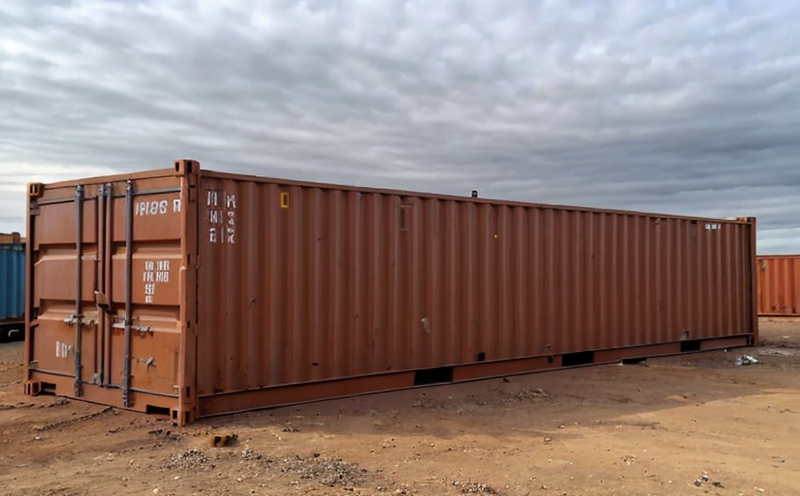Shipping container structural inspection
The integrity of shipping containers is paramount in ensuring safe and efficient transportation of goods. Shipping container structural inspections are critical to identify potential weaknesses or defects that could compromise the safety, security, and functionality of the container during transport.
Structural inspections focus on assessing the strength and durability of the container’s framework, including its walls, roof, floor, and corners. These assessments are conducted in accordance with international standards such as ISO 24837:2017, which provides guidelines for the inspection of sea containers. The primary goal is to ensure that containers meet specific structural integrity requirements.
During inspections, experts carefully examine the container’s construction using a combination of visual inspection and non-destructive testing (NDT) methods. These NDT techniques include ultrasonic testing, radiography, and magnetic particle inspection, which allow for the detection of internal flaws without damaging the material.
The process begins with a thorough external examination of the container to identify any visible damage or anomalies. This initial assessment is followed by detailed inspections inside the container, focusing on areas that are prone to stress and wear. The internal checks include examining the structural integrity of the floor, walls, roof, and corners. Special attention is given to identifying signs of rust, dents, cracks, and other defects.
The inspection methodology also includes a comprehensive review of the container’s history, including any previous repairs or modifications. This information helps in understanding the container's lifecycle and potential areas of vulnerability. Compliance with international standards ensures that the inspection process is standardized and reliable.
Once the structural integrity assessment is complete, a detailed report is generated. This report includes all findings from the inspection, along with recommendations for any necessary repairs or maintenance. The report serves as a critical tool for stakeholders, including quality managers, compliance officers, and R&D engineers, to make informed decisions about the container's continued use.
Regular inspections are essential to maintain the structural integrity of shipping containers. These checks can help prevent accidents, reduce insurance premiums, and ensure regulatory compliance. By adhering to strict standards and using advanced inspection techniques, shipping companies can safeguard their investments and protect the safety of all stakeholders involved in the transportation process.
Scope and Methodology
The scope of a shipping container structural inspection is comprehensive, covering various aspects that impact the integrity and usability of the container. The primary focus is on evaluating the structural components such as walls, roof, floor, and corners for any signs of damage or deterioration.
- External Inspection: This involves a visual examination of the container’s exterior to identify visible damage, rust, dents, and other anomalies.
- Internal Inspection: Detailed checks inside the container are conducted, focusing on areas that experience high stress or wear. Special attention is given to floor integrity, wall stability, roof strength, and corner durability.
- Historical Review: The inspection also includes a review of the container’s maintenance history and any previous repairs or modifications.
The methodology used for these inspections adheres strictly to international standards such as ISO 24837:2017. These guidelines ensure that the inspection process is standardized, reliable, and consistent across different regions and stakeholders.
During the external examination, inspectors use their expertise to identify any visible signs of damage or deterioration. For internal inspections, non-destructive testing (NDT) methods are employed. Common NDT techniques include ultrasonic testing, radiography, and magnetic particle inspection. These advanced techniques allow for the detection of internal flaws without causing any physical harm to the material.
The inspection process is thorough and systematic, ensuring that no critical areas are overlooked. By following a structured approach, inspectors can provide accurate assessments and recommendations for maintaining the structural integrity of shipping containers.
Why Choose This Test
Selecting a comprehensive shipping container structural inspection is crucial for several reasons. Firstly, it ensures the safety and security of goods during transportation by identifying potential weaknesses or defects in the container’s structure. Secondly, regular inspections help maintain regulatory compliance, which is essential for avoiding penalties and fines.
By adhering to strict international standards such as ISO 24837:2017, these inspections provide reliable and consistent results. This consistency ensures that all stakeholders involved in the transportation process have a clear understanding of the container’s condition.
The detailed reports generated from these inspections serve multiple purposes. They are invaluable tools for quality managers to ensure product integrity, compliance officers to maintain regulatory adherence, and R&D engineers to improve design and performance. These reports also help procurement teams make informed decisions about purchasing new containers or maintaining existing ones.
Regular structural inspections can significantly reduce the risk of accidents and damage during transport. By addressing potential issues early on, companies can prevent costly repairs and downtime. Additionally, these inspections contribute to a safer working environment for all personnel involved in the transportation process.
In conclusion, choosing a shipping container structural inspection is not just an option but a necessity. It ensures safety, compliance, integrity, and efficiency throughout the entire transportation process. By investing in regular inspections, companies can protect their investments, maintain regulatory standards, and ensure the safe transport of goods.





